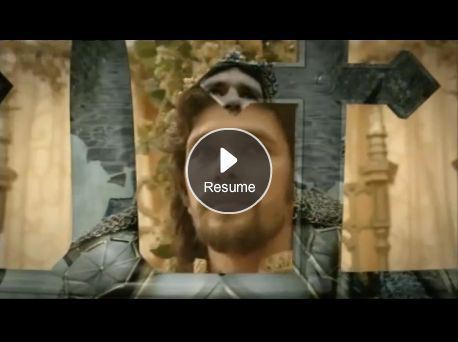Andrew Collins's Blog, page 35
July 13, 2012
Faster, wryer, longer
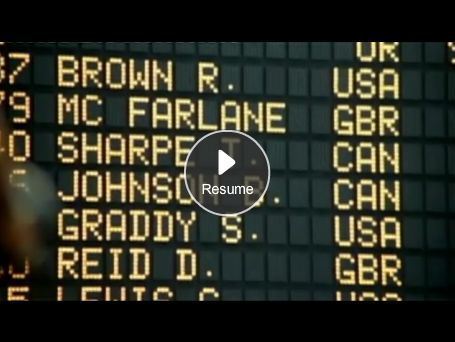 So, as the Olympics draw ever closer and London falls under martial law, I set aside my burning animosity towards the Games for this week’s Telly Addict and review the four documentaries that comprised Faster, Higher, Stronger * on BBC2; also, the pre-dissed The Newsroom from Aaron Sorkin on Sky Atlantic; and the return to BBC1 of the English Wallander, which I had never seen before this, and of course, fell for pretty comprehensively, despite it not being wholly Swedish.
So, as the Olympics draw ever closer and London falls under martial law, I set aside my burning animosity towards the Games for this week’s Telly Addict and review the four documentaries that comprised Faster, Higher, Stronger * on BBC2; also, the pre-dissed The Newsroom from Aaron Sorkin on Sky Atlantic; and the return to BBC1 of the English Wallander, which I had never seen before this, and of course, fell for pretty comprehensively, despite it not being wholly Swedish.
* To declare an interest, BBC Bristol’s Francis Welch, who made the third film about the 1500m, once made a documentary which I fronted, for BBC4, about Life On Mars. Not that there’s any conflict here, as I didn’t specifically refer to his 1500m film anyway. As an aside, he wrote an interesting BBC blog about the making of his programme, which is here.








July 12, 2012
An open letter to Ed

Dear Ed Miliband,
I used to be a Labour loyalist. With my leftwing convictions hardened by inspiring conversations with my late grandfather, who was a shop steward, a book about the Labour movement by Jeremy Seabrook called What Went Wrong? and the persuasive, intelligent propaganda of Red Wedge, Billy Bragg and the NME, I voted Labour in 1987, and again in 1992 and 1997. I had been a Labour party member in 1992, but cancelled my subscription in a fit of self-destructive pique after the failure of a robust Neil Kinnock to unseat the deeply unimpressive John Major, leading to the Tories’ fourth consecutive victory.
Like many Labour supporters, I saw Tony Blair as a new start – despite the tragic circumstances that led to his election as party leader – and fell for his matey charm and modernising dynamism. When he took New Labour to power in 1997, I was as euphoric as anybody else who’d considered Labour unelectable. The scales soon fell from my eyes.
First there was Bernie Ecclestone. Then tuition fees. And then 9/11, which saw Blair line up right behind the most dangerous American President in history, ready and willing to send British troops to wherever Bush ordered them to be sent. The invasion of Iraq was the flashpoint for a lot of disillusioned, betrayed Labour supporters. To march that day against the war and be roundly ignored was a cosmic slap in the face, not least because Blair had already struck a deal behind the scenes, later verified by the New York Times in the form of a memo written by Blair adviser David Manning after a meeting on January 31, 2003, in which Bush names the date, already set.
Who was this monster we had elected only six years before? New Labour, new danger indeed. When Blair was re-elected in 2005, it wasn’t a victory for New Labour, but a defeat for the dilapidated Tories, who had replaced the unpopular Iain Duncan-Smith with the even less popular and frankly creepy Michael Howard. With a majority reduced over four years from 167 seats to 66, this was Labour exposed as a mess, with the lowest percentage of the popular vote of any majority government in British history.
Tony Blair finally stood down in 2007, a total liability. Gordon Brown, who presided over the economy when times were good, turned out to have booby-trapped it, and the bubble soon burst, taking any shred of Brownite credibility with it, despite his ascension. It was almost as if Blair had waited until the very worst moment to hand the reins of power over to his hated rival. It was a depressing period. I cannot lie: by the time of the 2010 election, I wanted to see the back of Labour. I actively wanted them out of power. I didn’t want the Tories in, and I knew the Liberals couldn’t do it, and when they formed a Coalition, I didn’t know what to think. I hated the fact that my support of Labour had curdled to active opposition, but an optimistic part of me hoped that maybe out of power they would re-group and come back without the “New.”
You, Ed Miliband, beat your brother to the leadership. You were handed the moral high ground on a silver platter. Cameron’s Tories were worse than Thatcher’s. Out of touch, preening, self-serving, a bit thick, lacking in empathy and life experience, and seemingly without passion or ideology, driven only by greed and self-interest. Their shock-doctrine response to the recession was to kick the poor when they were down and punish them for ever claiming a benefit, or taking a part-time job, or having a baby, or being disabled, or getting old. Hey, it was a recession – a recession inherited from Labour! Their hands were tied! If ever there was a time for the new Labour leader to emerge, like a nerd in a Marvel comic, as a superhero, it was now.
I don’t know if you are up to the job, Ed. I sort of need you to be. But something toxic is happening, and you seem to be letting it happen: the return of Tony Blair to Labour politics.
We learn that he is to take his most active part in the Labour party since retiring from frontline politics, contributing ideas and experience to your policy review, “giving advice on the Olympic legacy” and in particular how to “maximise both its economic and its sporting legacies”. Your words. Because Blair was in charge when London won the Olympic bid in 2005, you are now using this to paper over all the ill he caused at the very same time (not least firing up terrorism at home through his gung-ho colonial actions abroad, as evidenced by the horror of the day after we got the Olympic bid that July).
Do you really want Blair to reinforce your chances of election? Have you forgotten what he did to Labour? If I were you, I wouldn’t have even shared a platform with the money-grabbing egotist at the fundraising event at the Emirates stadium (organised by Alastair Campbell, as if to underline its old boys’ reunion party vibe). You were a Brownite, Ed. Sucking up to Blair is not “uniting the tribes,” it’s taking his side. It’s signing up to his “legacy”, which will always be that of a warmonger, not as a Middle East envoy or jet-setting author and after-dinner speaker. (To quote his vocal critic at the Leveson inquiry: “This man should be arrested for war crimes.” Exit, pursued by a bear.)
You praised him publicly, feeding his voracious ego, calling the Olympic bid “one of the many proud achievements of the governments that Tony led”, adding the following proud achievements: “saving the NHS, rebuilding our schools and cutting crime”. Saving the NHS? He pulled its guts out before handing it to the Tories to finish off. He and Brown put “public” and “private” together and made sure that the public sector ended up with a massive bill from the private sector for all its new hospitals and schools. Blair only rebuilt our schools by handing private contractors juicy contracts that the taxpayer would pay for, no matter how high they spiralled.
You again, Ed: “I want to thank Tony for what he did for our party and for our country. And I know how committed he is to Labour winning next time.” Yes, only if he can take some of the glory. Labour will not win next time if you allow Tony Blair anywhere near a platform you’re on.
Your spin doctors have been quick to warn us not to “over-interpret” Blair’s prodigal return to Labour. I call it plain old “interpret”: he’s back, and he’s going to win the next election for you. Except he isn’t. I can’t be the only person who would be physically unable to place a cross next to a party with Tony Blair in it.
Londoners were lucky enough to have Blair “guest-edit” an edition of the London Evening Standard last month. This was clearly the first stepping stone in his return to prominence. He told the paper, “What I can do is contribute to the debate, whether it is Europe or the Arab spring or areas to do with economy and public service reform here.” Of the financial crisis, he said, “My view is that you still, in order to win from the Labour perspective, have to have a strong alliance with business as well as the unions … I understand that some people think the financial crisis has altered everything. And the mood is against this. Personally I don’t think that’s correct.”
Keep your friends close, Mr Miliband, and your enemies at arm’s length. Ideally, keep them outside, in the car park. Tony Blair is not your friend. You do the maths.
A concerned voter
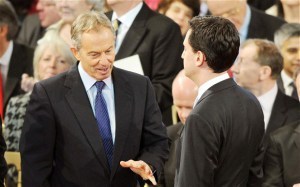








July 11, 2012
Now a spectacular new film

Since posting about Ernest Borgnine and The Poseidon Adventure, I’ve managed to lay my hands on the 1974 Pan paperback edition of the Paul Gallico source novel. I’m so pleased to have it in front of me. The cover has actually come free of its moorings, but it’s in working order otherwise, and transports me back to 1975, when it became talismanic to my 10-year-old self: my only way of finding out anything further about The Poseidon Adventure. On the front, you can see the pre-disaster still of Hackman, Stevens and Borgnine, from which I was able to etch vague likenesses with my pens and pencils. (Interesting that the image of the ship being upended by a tidal wave is not a still, but a professional likeness in pen and pencil.) And whose idea was it to put “Paul Gallico’s The Poseidon Adventure“? That’s not really book grammar is it?
Anyway, the back cover is where the real meat is.

Having been spooked by the blood, sweat and tears of the survivors’ hellish journey through the bowels of the stricken vessel, it was with mixed feelings that I pored over the large still from the boiler room climax on the back cover of my book. I could identify Nonnie, Mr Martin and Mr and Mrs Rogo, and those were definitely Susan Shelby’s glistening calves and red high-heels. As an aide memoire, this atmospheric pic was gold dust; it transported me back to the film. As mentioned, the full cast list was also vital in terms of working out who played whom. Hats off to my Dad buying me the book as a present. (He’d taken my brother Simon to Birmingham for some kind of investigation into his constant nosebleeds, and he got a present for being brave; Dad was an equal-opportunities present-buyer.)
It is hard to convey to younger people how much more valuable printed material was in the 1970s. If it wasn’t printed on paper, it didn’t really exist. This book was literally all of the Poseidon Adventure ephemera I could lay my hands on. These days, a Google or YouTube search yields pretty much everything.
Because the film had such an existential impact upon me at a formative age, it remains special, and a glimpse of footage or a still retains the power to upend the hairs on the back of my neck. Long may this continue. Anyway, thanks to the alchemy of the scanner and the internet, I can now share the papery artifact with you.
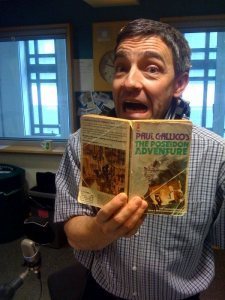
Oh, and here’s a silly photo of me posing with the hallowed book, taken during the History Of Collins & Herring In 100 Objects project on Saturday mornings on 6 Music in 2010. I was surprised, and not unpleasantly, to find that all of the objects still exist in a gallery, if you’re nostalgic like that.
Ernest Borgnine Latest: I am recording an obituary for Radio 4′s Last Word programme tomorrow, and all being well, it will air on Friday at 4pm. It will be an honour.








July 9, 2012
A lotta guts

The legendary Ernest Borgnine, who has died of renal failure at what can only be described as the ripe old age of 95, was a key player in my early, movie-loving life. As is well documented, I was taken to see The Poseidon Adventure, aged 10, by my Dad in 1975, and became frankly obsessed by the mother of all disaster movies. Although it scared the life out of me, exposing me to peril, degradation and mortality at a tender age, it also thrilled me, and my attempts to “process” this film that had made such an impression, stretched to reading the 1969 source novel, by Paul Gallico, practising holding my breath underwater at Kingsthorpe pool, and drawing pictures of characters and scenes from memory.
The 1974 Pan paperback of The Poseidon Adventure was a gift, as it bore two stills from the film on the front and back cover. (I still have it, so dog-eared now it looks as if it has been salvaged from the SS Poseidon by Michael Caine.) On the front, we see the characters Reverend Scott, cop Mike Rogo and his wife Linda, all scrubbed up for the New Year’s Eve party that will be their last taste of “civilisation” before the ship turns over. On the back, we see the party of survivors in the final stages of their escape, all sweaty and dishevelled now, with Rogo down to his vest, and Linda wearing the shirt he was wearing on the front cover.
You have to remember that this was an age long before video and the internet. It was simply not possible for me to look the film up anywhere. (Our library of books at home was tiny. Indeed, a couple of years later, I was able to borrow from Northampton Library a themed book called Thriller Movies by Lawrence Hammond, which contained valuable information about – and two more pics from – my feared but favourite movie, and Catastrophe: The End Of Cinema?, a pretty cheap tome, also provided pictorial relief.) Anyway, the Gallico paperback also had a cast list, from whose hierarchy, using my powers of deduction, I was able to hazard a guess at who played whom. Gene Hackman’s name was first, so he was Scott. Ernest Borgnine’s was second, so he must have been Rogo. (I was right. And so was I with regards the others, although I got Carol Lynley and Pamela Sue Martin mixed up, and Arthur O’Connell and Eric Shea.)
The funny thing about Ernest Borgnine is that he looked like an Ernest Borgnine. That was the amazing thing about him. Although Anglicised just a little from Ermes Borgnino, it fitted his wide, beaten-up face and brickhouse frame, and although I wouldn’t have been clever enough to spot it, aged 10, he is very visibly Italian-America, wouldn’t you say? His “journey” through the film makes him an essential moving part: a foil to Hackman’s sometimes over-earnest and bullying persona; somewhat brow-beaten by his ex-prostitute wife but adoring underneath the bickering; tough, for certain, and a safe, blue-collar pair of hands, if not as mentally agile as the Reverend and perhaps forever destined to be a deputy. In many ways, although Hackman would soon be anointed as My Favourite Actor – a devotion that lasted throughout my teen years and into adulthood – Borgnine (whose name I initially pronounced Borg-neen) had an instant seat at my top table.
I caught up with his other key parts belatedly in the sort of films made in the 50s and 60s that were then showing on television: in The Dirty Dozen, Bad Day At Black Rock, From Here To Eternity, Ice Station Zebra, The Vikings, Flight Of The Phoenix – always the tough nut, usually a bad guy. In Black Rock, he was Coley, the “half-horse, half-alligator” who would threaten to “kick a lung outta ya!” I even enjoyed him as Angelo Dundee in The Greatest. The moment I saw that gap-toothed grin, I felt reassured that I would not be wasting my time with a film on TV.
It was, of course, Paddy Chayevsky’s adapted-from-TV Marty that, in 1955, alerted people to Borgnine’s more subtle, everyman acting chops. It won him an Oscar. After which, frankly, he returned to being a tough guy. It was years before I saw Marty. He remained perhaps proudest of the performance for the rest of his days.
To a younger generation, he’ll always be Santini from Airwolf in the mid-80s, although I missed that meeting. As he grew older and more grizzled, and even more lovable, I relished seeing the autumnal Borgnine in serious, late-20th/early-21st-century movies like Gattaca or the portmanteau 11’09″01 September 11, bringing the ballast that only age and experience bestow. He had already turned 80, but nothing like on his last legs.
In May 2001, I met him. Aged eighty-four and full of life, he was over in the UK not to promote his own work, but his wife’s. His fifth wife, whom he married in 1973, was Tova Traesnaes, Norwegian by birth and founder of her own cosmetics line by trade. Ernie, as we shall now call him, and indeed how he introduced himself to me, was here to accompany her on a promo trip. She’d become quite the QVC staple, and they made a happy couple. He’d agreed to come into Radio 4, at Broadcasting House, to conduct a one-one-one career interview with me for Back Row, the weekly cinema show I used to host. As you might imagine, it was about as exciting a professional engagement that I could imagine, right up there with interviewing Robert Altman a year later.
He made quite an impact. White-haired and beaming, he lit up the corridors of the Radio Arts department, saying hi to everybody, and even opening doors of closed offices to announce his arrival and shake hands. It is not meant to demean him to say that when a producer approached him to shake his hand, concealing something in the other hand which may have been a diary or a phone, he assumed it was a camera and that she was after a photo, and immediately fell into the pose of a man about to be immortalised. This made us love him even more.
It was rare that anybody broke the Dorchester Hotel promo protocol and ventured into our unglamorous offices to be interviewed in what was a cupboard like studio, with no booth or glass, just a small table, two chairs, a jug of water and a tape machine next to which a producer could perch. It was like a royal visit, seriously. Robert Altman came in too, as did – to name but a few good sports – Juliet Stephenson, John Barry and Tom Courtney. You could barely squeeze Ernie’s personality in there.)
I have asked my old producer if he might transfer the interview onto a disc for me, and I can’t wait to hear it again. It was certainly a highlight of my movie-interviewing career, even if Ernie’s answers were well-rehearsed and he gave us nothing approaching a scoop. That wasn’t his job. For the record, we played the Borgnine interview out on May 26, 2001, in the same programme as piece on Johnny Depp’s new film Blow, a humorous column about Hollywood’s war with TV by Sue Perkins, and an item about Series 7: The Contenders.
On their way out of the building, as noisy and ebullient as they had been their way in, Mr and Mrs Borgnine-Taesnaes handed out cactus-based natural cosmetics.
I loved Ernest Borgnine, veteran of around 140 films, and would have done if I’d never been anywhere near his presence. He shall never be forgotten. “You had a lotta guts, lady,” he said, as Rogo, to Mrs Rosen (Shelley Winters) after she’d laid down her life in The Poseidon Adventure. So did he.








July 8, 2012
Graphic, novel

Public Service Announcement. I have changed the “theme” of this blog, via the magic of clicking on one I liked the look of, under the WordPress bonnet. There’s no deep reason for this. No crisis. I’ve been blogging a bit more regularly of late, and the way the pictures look has been getting on my nerves – the thick, pale pink borders? – and the fact that the date stamp didn’t include the year. (The circular stamp and typography were pretty, but without a year, the archive and search facilities felt a bit woolly.)
I wanted something a little cleaner, and clearer, and plainer. This is the one I’ve chosen. As you can see, I’ve brought the Mitfords banner with me, and the “widgets” are the same. I hope you find it easy to navigate and read. (For the record, the “theme” is called Twenty Eleven in the “theme” catalogue. That’s me: living in the past.) I’m open to comments. As ever.








July 7, 2012
A popularity contest
This was to be my next column for the dearly departed Word magazine. I’d pitched it, and it was in a holding pattern, awaiting clearance – in other words, for a bit of space at the front of the mag. It was half-written, so I’ll finish it here. (Hey! Self-publishing! For no money! It’s the future!)

Today’s hot topic is … well, a seemingly obscure anecdote from my days as a music journalist, but bear with me. I remember being on Pop Will Eat Itself’s tour bus circa 1991 and discovering, amid the usual collection of VHS tapes and CDs, the inevitable copy of Bret Easton Ellis’s American Psycho, very much the accessory du jour at the time (the Fifty Shades Of Grey of the early 90s, except not much favoured by women.). The NME photographer Tim was keen to show me the “bit with the rat”, already notorious as the most disgusting chapter in the book. This proved simple, as the band’s paperback fell automatically open at that very page, where its spine was now permanently bent. This was the blunt, physical way of discerning a novel’s most popular passage in the 20th century: you used your detective skills.
In the same prehistorical era, the NME, in common with other quaintly paper-based publications, would run an annual reader survey. No clicking here. It involved finding a Biro, filling in a form, cutting along the dotted line, sticking it in an envelope, licking a stamp and sending it off via the postal service. (As a reader, I used to fill these in with glee, but never once got round to sending the form in.) The results of the survey were eagerly disseminated by the suits and presented back to those of us who toiled in the editorial department and we’d learn, without exception, every year, that the readers bought the paper primarily for the Gig Guide. Not for the reams of purple prose we sweated over every week, but the Gig Guide – unavailable elsewhere in that pre-electronic age, lest we forget. It was the newspaper’s “bit with the rat.”
How Amish the methodology seems now. We also used to have what were known as “chart return shops”, which were outlets selected to propel A Flock Of Seagulls or Sailor to the toppermost of the poppermost – and where, we were told, shady record company sharks would bulk-buy said items to help them on their way. It wasn’t exactly a level playing field. But then, nor is the click-based electronic age we now live in. What might appear to be a more democratic popularity contest is just as open to corruption.

Consider the list of “favourites” that appears on every self-respecting website – some of which can be seen above, but you know what I’m talking about: the most popular entries on a blog, most read stories on a news site, the “trending” topics on Twitter. If ever there was a self-fulfilling algorithmic prophecy, it’s here. Because once a “popular” story appears in the “most popular” panel, it’s far more likely to be clicked on, and to remain popular. This is how a search engine like Google works, isn’t it? And how something like Charlie Bit My Finger can remain one of the most watched clips on YouTube even though it’s barely worth a look.
Hey, we all need our hand holding. It’s a jungle out there. It’s certainly a jumble out there. Information is now no longer fired at us from billboard and TV screen; it oozes out of every electronic pore. Sports players are covered from head to toe in brands and logos, and that’s before they stand in front of the backdrop created out of more brands and logos; no news programme is complete without a ticker running along the bottom of the screen – that’s now standard-issue – but at every juncture on TV now we are entreatied to email, text, Tweet and add our voice to what is already a cacophony of voices. Those electronic black-and-white pixillated squares that look like interference are now stamped on every other ad, waiting to be unlocked by the app on our mobile phones (if we have such things), in order to supply us with more information. I won’t moan about the amount of supplements in our swollen Saturday and Sunday newspapers, for fear of jinxing them out of existence, but there again is an information overload, bagged up.
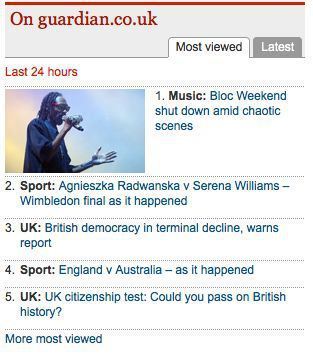
Perhaps it’s a benign public service to constantly shuffle things to the top of charts, so that we only need trouble ourselves with what’s already popular. But I worry – and I know I shouldn’t – that perhaps this accepted algorithm is killing our freedom of choice. There are a lotta books on Amazon. There is no meaningful way you can “browse” the site, despite the use of that word; in reality, you’re at the mercy of having books suggested to you based on … books you’ve previously looked at. Never mind books you’ve previously bought. I must admit I sometimes use Amazon as a journalistic resource. It’s free! But if you look a book or DVD up, for research, it will affect what other books and DVDs Amazon hawks at you. “Like this? You’ll love this!” Not necessarily. Amazon currently thinks I want to buy Coriolanus on DVD, because I recently looked up the BBC Television Shakespeares box set simply to see how many discs were in it for a link in my Telly Addict column. Fail!
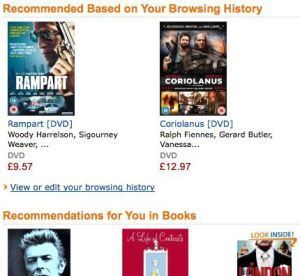
Talking of books. My first memoir, Where Did It All Go Right?, defied low expectation and crept up into the Top 10 non-fiction paperback bestsellers back in 2003. I discovered at that time that WHSmith runs its outlets at stations and airports as a satellite to its high street stores; I also discovered that this is precisely where you want your paperback displayed. The thing is, once it’s in the Top 20, say, at those vital station and airport shops, it’s more likely to be picked up by a browser waiting for the call to go to their gate. The popularity of that book is thus almost guaranteed: it’s displayed at head height in the chart section, ergo it gets bought and stays in the chart section. Honestly, WDIAGR? lingered at head height for months. It wasn’t because it was one of the best books on sale, merely one of the most visible.
So, the seeding of that which is already popular is not new. In the old days, when the pop charts were based on people going out and buying round black discs at the weekend – as opposed to being based on people clicking a mouse or trackpad at literally any time of the day or night – it really mattered what was on Top Of The Pops, or conveniently displayed in Woolworths. These days, the equivalent is whatever’s in the revolving banner ad on the iTunes store homepage, or any of its generic tributaries. (When the Collings & Herrin Podcast found favour with a comedy nerd who worked on the iTunes Store webpage and then started to chart highly, as long as we kept producing one a week, our prominence was ensured.)
The Long Tail is an attractive concept: that with electronic shopping, an outlet without floor space to contend with can almost literally offer anything and everything, and the most obscure item in the shop will drive turnover as readily as your bestselling loss-leaders. But as the online stores have got deeper and deeper – and the tail longer – I wonder if customers aren’t more likely to be just adding to the pre-packed myth of “popularity”, and picking up that which is already trending? (Something trends; people chase it; it trends some more.)
Me? I’m old fashioned or moribund enough to still prefer books that fall open at well-thumbed pages, and shops you can poke around in with racks that can be thumbed. That said, you will find this widget on this blog, which makes me a massive hypocrite. I’m quite looking forward to a blog entry called “You must read this blog entry” going to the top of the charts, where it will stay FOREVER.
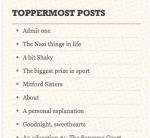
PS: Now that my situationist prank has succeeded (see: below), I’ll change the title of the post back to its original.
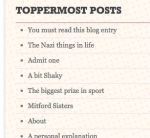








You must read this blog entry
This was to be my next column for the dearly departed Word magazine. I’d pitched it, and it was in a holding pattern, awaiting clearance – in other words, for a bit of space at the front of the mag. It was half-written, so I’ll finish it here. (Hey! Self-publishing! For no money! It’s the future!)

Today’s hot topic is … well, a seemingly obscure anecdote from my days as a music journalist, but bear with me. I remember being on Pop Will Eat Itself’s tour bus circa 1991 and discovering, amid the usual collection of VHS tapes and CDs, the inevitable copy of Bret Easton Ellis’s American Psycho, very much the accessory du jour at the time (the Fifty Shades Of Grey of the early 90s, except not much favoured by women.). The NME photographer Tim was keen to show me the “bit with the rat”, already notorious as the most disgusting chapter in the book. This proved simple, as the band’s paperback fell automatically open at that very page, where its spine was now permanently bent. This was the blunt, physical way of discerning a novel’s most popular passage in the 20th century: you used your detective skills.
In the same prehistorical era, the NME, in common with other quaintly paper-based publications, would run an annual reader survey. No clicking here. It involved finding a Biro, filling in a form, cutting along the dotted line, sticking it in an envelope, licking a stamp and sending it off via the postal service. (As a reader, I used to fill these in with glee, but never once got round to sending the form in.) The results of the survey were eagerly disseminated by the suits and presented back to those of us who toiled in the editorial department and we’d learn, without exception, every year, that the readers bought the paper primarily for the Gig Guide. Not for the reams of purple prose we sweated over every week, but the Gig Guide – unavailable elsewhere in that pre-electronic age, lest we forget. It was the newspaper’s “bit with the rat.”
How Amish the methodology seems now. We also used to have what were known as “chart return shops”, which were outlets selected to propel A Flock Of Seagulls or Sailor to the toppermost of the poppermost – and where, we were told, shady record company sharks would bulk-buy said items to help them on their way. It wasn’t exactly a level playing field. But then, nor is the click-based electronic age we now live in. What might appear to be a more democratic popularity contest is just as open to corruption.

Consider the list of “favourites” that appears on every self-respecting website – some of which can be seen above, but you know what I’m talking about: the most popular entries on a blog, most read stories on a news site, the “trending” topics on Twitter. If ever there was a self-fulfilling algorithmic prophecy, it’s here. Because once a “popular” story appears in the “most popular” panel, it’s far more likely to be clicked on, and to remain popular. This is how a search engine like Google works, isn’t it? And how something like Charlie Bit My Finger can remain one of the most watched clips on YouTube even though it’s barely worth a look.
Hey, we all need our hand holding. It’s a jungle out there. It’s certainly a jumble out there. Information is now no longer fired at us from billboard and TV screen; it oozes out of every electronic pore. Sports players are covered from head to toe in brands and logos, and that’s before they stand in front of the backdrop created out of more brands and logos; no news programme is complete without a ticker running along the bottom of the screen – that’s now standard-issue – but at every juncture on TV now we are entreatied to email, text, Tweet and add our voice to what is already a cacophony of voices. Those electronic black-and-white pixillated squares that look like interference are now stamped on every other ad, waiting to be unlocked by the app on our mobile phones (if we have such things), in order to supply us with more information. I won’t moan about the amount of supplements in our swollen Saturday and Sunday newspapers, for fear of jinxing them out of existence, but there again is an information overload, bagged up.

Perhaps it’s a benign public service to constantly shuffle things to the top of charts, so that we only need trouble ourselves with what’s already popular. But I worry – and I know I shouldn’t – that perhaps this accepted algorithm is killing our freedom of choice. There are a lotta books on Amazon. There is no meaningful way you can “browse” the site, despite the use of that word; in reality, you’re at the mercy of having books suggested to you based on … books you’ve previously looked at. Never mind books you’ve previously bought. I must admit I sometimes use Amazon as a journalistic resource. It’s free! But if you look a book or DVD up, for research, it will affect what other books and DVDs Amazon hawks at you. “Like this? You’ll love this!” Not necessarily. Amazon currently thinks I want to buy Coriolanus on DVD, because I recently looked up the BBC Television Shakespeares box set simply to see how many discs were in it for a link in my Telly Addict column. Fail!

Talking of books. My first memoir, Where Did It All Go Right?, defied low expectation and crept up into the Top 10 non-fiction paperback bestsellers back in 2003. I discovered at that time that WHSmith runs its outlets at stations and airports as a satellite to its high street stores; I also discovered that this is precisely where you want your paperback displayed. The thing is, once it’s in the Top 20, say, at those vital station and airport shops, it’s more likely to be picked up by a browser waiting for the call to go to their gate. The popularity of that book is thus almost guaranteed: it’s displayed at head height in the chart section, ergo it gets bought and stays in the chart section. Honestly, WDIAGR? lingered at head height for months. It wasn’t because it was one of the best books on sale, merely one of the most visible.
So, the seeding of that which is already popular is not new. In the old days, when the pop charts were based on people going out and buying round black discs at the weekend – as opposed to being based on people clicking a mouse or trackpad at literally any time of the day or night – it really mattered what was on Top Of The Pops, or conveniently displayed in Woolworths. These days, the equivalent is whatever’s in the revolving banner ad on the iTunes store homepage, or any of its generic tributaries. (When the Collings & Herrin Podcast found favour with a comedy nerd who worked on the iTunes Store webpage and then started to chart highly, as long as we kept producing one a week, our prominence was ensured.)
The Long Tail is an attractive concept: that with electronic shopping, an outlet without floor space to contend with can almost literally offer anything and everything, and the most obscure item in the shop will drive turnover as readily as your bestselling loss-leaders. But as the online stores have got deeper and deeper – and the tail longer – I wonder if customers aren’t more likely to be just adding to the pre-packed myth of “popularity”, and picking up that which is already trending? (Something trends; people chase it; it trends some more.)
Me? I’m old fashioned or moribund enough to still prefer books that fall open at well-thumbed pages, and shops you can poke around in with racks that can be thumbed. That said, you will find this widget on this blog, which makes me a massive hypocrite. I’m quite looking forward to a blog entry called “You must read this blog entry” going to the top of the charts, where it will stay FOREVER.









The Nazi things in life
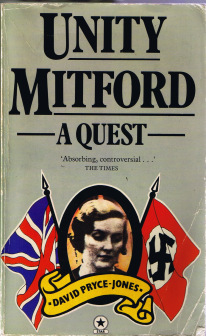
This can be of almost zero interest to anyone lacking my own Mitford sisters obsession, but I’m going to forge on and go public with it anyway, as I’ve mentioned this anomaly a couple of times before, but never got round to scanning in the evidence. Anyway … Above is the cover of the 1978 Star paperback edition of Unity Mitford: A Quest by David Pryce-Jones, first published in 1976. Take a look at the black and white head shot of Unity, between the Union and Nazi flags. Here it is in close-up.
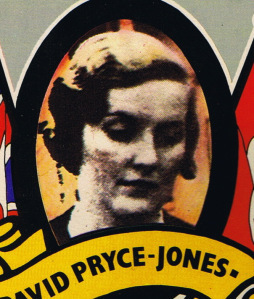
Unity Mitford, right? Wrong. Here is the same photo, uncropped, as it appears inside the book. Read the caption.
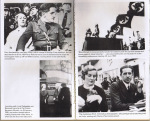
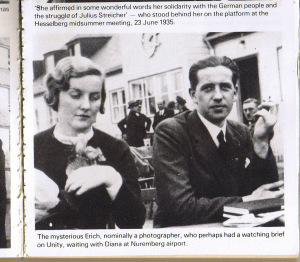
“The mysterious Erich, nominally a photographer, who perhaps had a watching brief on Unity, waiting with Diana at Nuremberg airport.”
So, had the publishers captioned the photo incorrectly? I think not. This is indeed a photo of Unity’s elder sister Diana Mitford (later Diana Mosley, after she married the British Union of Fascists leader, Oswald). Unity and Diana were the Nazi Mitfords, and often seen and photographed together. Both went to Munich before the war to hang out with Hitler, and attended the first Nuremberg rally, but it was Unity who actually stayed on until war was declared. (That said, Diana and Oswald were married in 1936 the house of the Goebbels, Joseph and Magda, with Hitler in attendance, so they were no slouches in the Nazi department.)
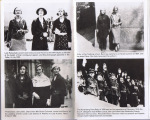
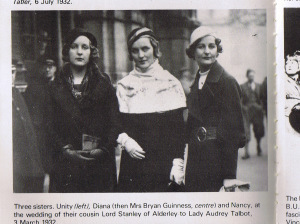
Above is another photo, also featured in this edition, which shows Unity on the left, with her squarer jaw; Diana in the centre, with those piercing eyes; and their oldest sister Nancy, who has a completely different shaped face and didn’t hang around in Germany at all. Unity and Diana do look alike, and do have similarly bobbed hair. But I think the evidence is clear. Look at the picture of Diana above and then compare with the picture of “Unity” on the cover. I say: when you’re publishing a book about one Mitford sister, it’s as well to double check you’ve got the right one on the cover before you send it to the printers.
By the way, this howling error make this book even more dear to me. It’s a forensically fascinating account of the life of the shortest-lived Mitford sister, although Decca is skeptical about some of the author’s conclusions about she and Unity’s poles-apart political destinations because, as she notes, he was born in 1936 and can’t possibly know as they did what a crazy decade the 1930s was.
The publishers changed the cover, anyway, presumably realising their little cock-up. Or perhaps not? This is how the book looks now, and this is definitely Unity, at a Nazi Youth camp in Hesselberg.
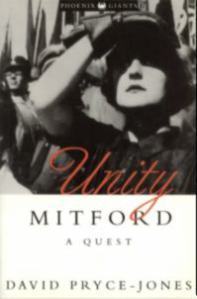








July 6, 2012
A bit Shaky
Only 21 days, nine hours, 17 minutes to go until the Olympics. (It will be less than that by the time you read this.) But in the meantime, here’s Telly Addict, in which I take a long, hard look at some long, hard Shakespeare, namely, Richard II, the first play in the Bard’s so-called “Henriad” (Henry IV Pts 1 and 2, and Henry V follow), on BBC1; Blackout, a new noir drama, also on BBC1; and Pts 1 and 2 of The Men Who Made Us Fat on BBC2, the excellent documentary about how America invented and exported obesity, not democracy, around the world, presented by Jacques Perreti, who used to work as a researcher at the production company that made Collins & Maconie’s Movie Club and who now produces and fronts his own documentaries (we should have tried harder to crush him at the time).








Admit one
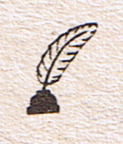

Having expressed my lack of excitement about the discovery of the Higgs Boson on Twitter on Wednesday – a semi-principled, partly caricatured indifference predicated upon my own dimwit’s grasp of physics, a year-round allergy to hype and a more specific aversion to the sneering nature of the nickname “the God Particle” – I was informed by a couple of defenders of science that if so, I was therefore unqualified to get excited about anything else that I get excited about, including films, music, TV and, specifically, the Mitford Sisters. (I was also called an “intellectual pygmy” by someone who I will never hear from again, which I’m pretty sure is sizeist.)
I was on that day particularly excited by the Mitford Sisters, the world’s most interesting aristocratic sibling sextet, as I had tickets to see two – that’s two – great lost TV documentaries about them at the BFI on London’s South Bank. As part of what looked like a generally if typically excellent season, The Aristocracy on TV, they’d forged a Mitfords double-bill out of Nancy Mitford 1904-1973: A Portrait By Her Sisters (1980) and Jessica Mitford: The Honorable Rebel (1977), both made for the BBC, the latter under the umbrella The Lively Arts.
Having been officially and continually besotted by Nancy, Pamela, Diana, Unity, Jessica and Debo Mitford since 2008, when Letters Between Six Sisters came out in paperback, my thirst for new material to ingest waxes and wanes. I went on an early rampage after Letters and Martin Bright’s C4 documentary alleging that Unity had been pregnant with Hitler’s child when she shot herself in 1939, shown around the same time. And from this first flush of enthusiasm for six literate women who were not only the subject of many books, they wrote plenty too (as well as seemingly endless correspondence), I created my own small library of new and secondhand volumes. (I am particularly fond of the yellowing paperback copy of Unity Mitford: A Quest, which erroneously displays a picture of Diana on the cover.) I have added to this intermittently when new reprints come round, or when Debo, the surviving Mitford, publishes another, but by and large, it’s kind of done. Which is why I jumped at the chance of viewing these two documentaries, which are unlikely to be shown on TV now.
I was delighted that the screening sold out, early on. It was a thrill to be among fellow Mitford groupies in NFT2, with not a spare seat in the house. Mitford fans do tend to be female, and not generally young, but this is by no means a rule. After all, five out of six of the Mitfords are dead – indeed, long dead; only Diana and Debo saw the Millennium in – and as such, loving them is not about remembering them, necessarily. I wasn’t aware of them, growing up, and I’m sure I heard about Nancy, the novelist, first. I don’t yearn to live in the tumultuous and deadly 1920s and 1930s that were their heyday, although I do find that era endlessly fascinating, with the aristocracy experiencing their first taste of decline, and losing their men in both world wars. (A life lost in action is a life lost regardless of breeding or money.)

Produced by Michael Barnes in 1977, when Jessica, or Decca, was a sprightly 60, the Melvyn Bragg-narrated portrait An Honorable Rebel was a real insight into Communist Spice’s life in Oakland, California. (She eloped to fight with the Republicans in the Spanish Civil War with her sweetheart Esmond Romilly – who was, sadly, killed in the Second World War, when he joined the Canadian Air Force – and ended up in the United States, where she married Civil Rights lawyer Bob Treuhaft.) By this time, she was in demand as a lecturer and speaker, and the documentary is topped and tailed by a talk given to students at a university. She had not developed an American accent, and retained the much-derided “Mitford accent”, which must have been impenetrable to outside influence. What a curiosity she must have seemed when she threw herself into protecting the rights of black people on the frontline of unrest in the 40s and 50s.
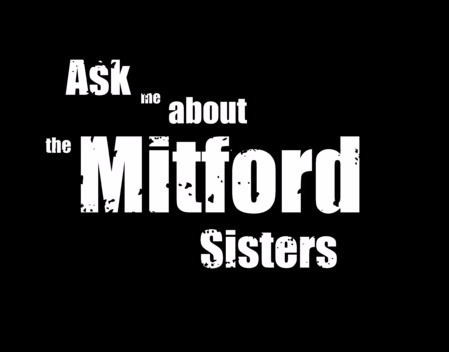
She and Bob – a lovely soul whose eyes almost disappear into slits when he smiles or laughs, which is often – are seen with compatriots from the Civil Rights years, when Decca was stamped a “subversive” by the authorities and the FBI started a long file that she reads from, having obtained it under the Freedom of Information Act. (It is, unsurprisingly, redacted; it also states that she and Bob were both earmarked for possible internment in camps that were always previously denied by the US government.) What a fiercely dedicated freedom fighter she appears. From a privileged upbringing, she confounded all by coming out and then going away, and none of it was a “gap year” pose. She and Romilly lived in an East End slum when they first returned from Spain, and the pair of them tended bar in Florida when they first arrived there. During the McCarthy years in America, she was not exactly blacklisted, but she refused to incriminate herself or fellow members of the Civil Rights Congress at the HUAC hearings – an episode she illuminates beautifully in the re-telling, with a comic twist about mishearing a question about her alleged membership of a “tenants’ association” which turned out to be a “tennis association.”
Here’s a thing: I have hardly ever seen the Mitford sisters moving about, or talking. There’s a marvellous late interview with Decca by Christopher Hitchens on iTunes, but very little footage exists of the sisters in their debutante days. Photos, yes, and portraits, and newspaper cuttings (such as when Decca eloped and her father, Lord Redesdale, sent out a search party), but moving pictures? Very scarce. Which is why both of these docs were such delights. Honorable Rebel – named after her first memoir, Hons and Rebels, one of my faves – is packed with Decca and her lovely, plummy voice, her sentences peppered with “you know”. But Nancy Mitford, made seven years after the eldest sister’s death by Julian Jebb, was arguably all the more valuable, as it featured brand new interviews with Pamela, Jessica, Debo and Diana, an icily elegant lady who was only 70 at the time, but could have been 90, with her white hair in a bun. Still beautiful, of course. Oh, and still defiantly claiming that the British Union of Fascists, led by her second hubby Oswald Mosley, were not anti-semitic. (Diana and Mosley were interned during the war, and did not live the life of luxury in there, other than being brought Stilton and Port by visitors, so it must have etched a few years into her, although she lived to the ripe old age of 93.)
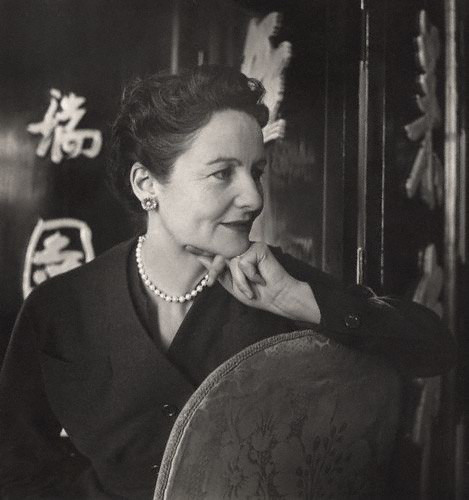
There’s also some plum footage of Nancy from 1966, filmed for ABC. She is, if anything, the most Mitfordy of all the Mitfords, fluting, “I enjoyed the war very much … it was very lively in London.” Pamela, whose lack of strident political affiliations left her without a handy nickname, and who might have been a lesbian, is a smashing old stick, feeding her hens and letting her pony off for a run, cheerily reading from Nancy’s novels and chuckling away at her favourite bits, the very image of a Countryside Alliance stalwart. She is least known of the sisters, but comes alive in this film. Debo we are used to seeing in her active dotage, such a fixture has she become at Chatsworth and on the book-signing circuit, but it’s sweet to catch her, aged 60, when she was still the Duchess of Devonshire. I love the way she admits to her older siblings’ stereotype as a bit of a dunce (“I can hardly read – I hate it, books”), and it’s amazing to think that 32 years later, she’d still be going strong.
There’s a bit of Diana’s son Jonathan Guinness in the Nancy film (he co-authored 1984′s solid House Of Mitford with daughter Catherine), but it’s all about the sisters. These films have reignited my passion for them. I could literally recite their shared biography to you, with accompanying amazing facts and trivia, and part of me wishes I really had worked up a one-man show about them for Edinburgh, as I had once fantasised about doing. I’m happy enough spreading the word. Quite clearly, you don’t have to agree with hereditary peerage and the old class system like David Cameron and George Osborne do, in order to find these people fascinating. From a feminist perspective, the sisters weren’t schooled as their father feared they would develop “fat calves” from all the hockey and as such, effectively educated and motivated themselves. Only Pamela and Unity did not write books (and Unity may have, had she lived). Nancy wrote eight highly-regarded novels and, later, a clutch of tolerated historical biographies. Decca wrote a dozen books including memoirs and, more importantly, investigative journalism; she changed the way Americans saw their own funeral industry with The American Way Of Death. (She is seen testifying against the sharp practices of the funeral industry at a hearing in Honorable Rebel.) Diana wrote three memoirs and was a book reviewer for Books & Bookmen and the Standard.
That two of them turned out to be fascists, and one of them a card-carrying Communist is what makes them so unique. I love them. Anyway, my tried-and-tested guide to the best of Mitfords literature – Mit Lit – is here, although I may have to add Jessica’s memoir of her time in the Communist Party, A Fine Old Conflict, to this, having now seen An Honorable Rebel, which has re-piqued my interest.
I know it’s in London, but the BFI is such an amazing place to go to, even if it’s just for a pricey drink in the bar. Have a look what’s on there now and in the near future.
Altogether now, for Decca:
‘Tis the final conflict
Let each stand in his place
The Internationale
Shall be the human race








Andrew Collins's Blog
- Andrew Collins's profile
- 8 followers


